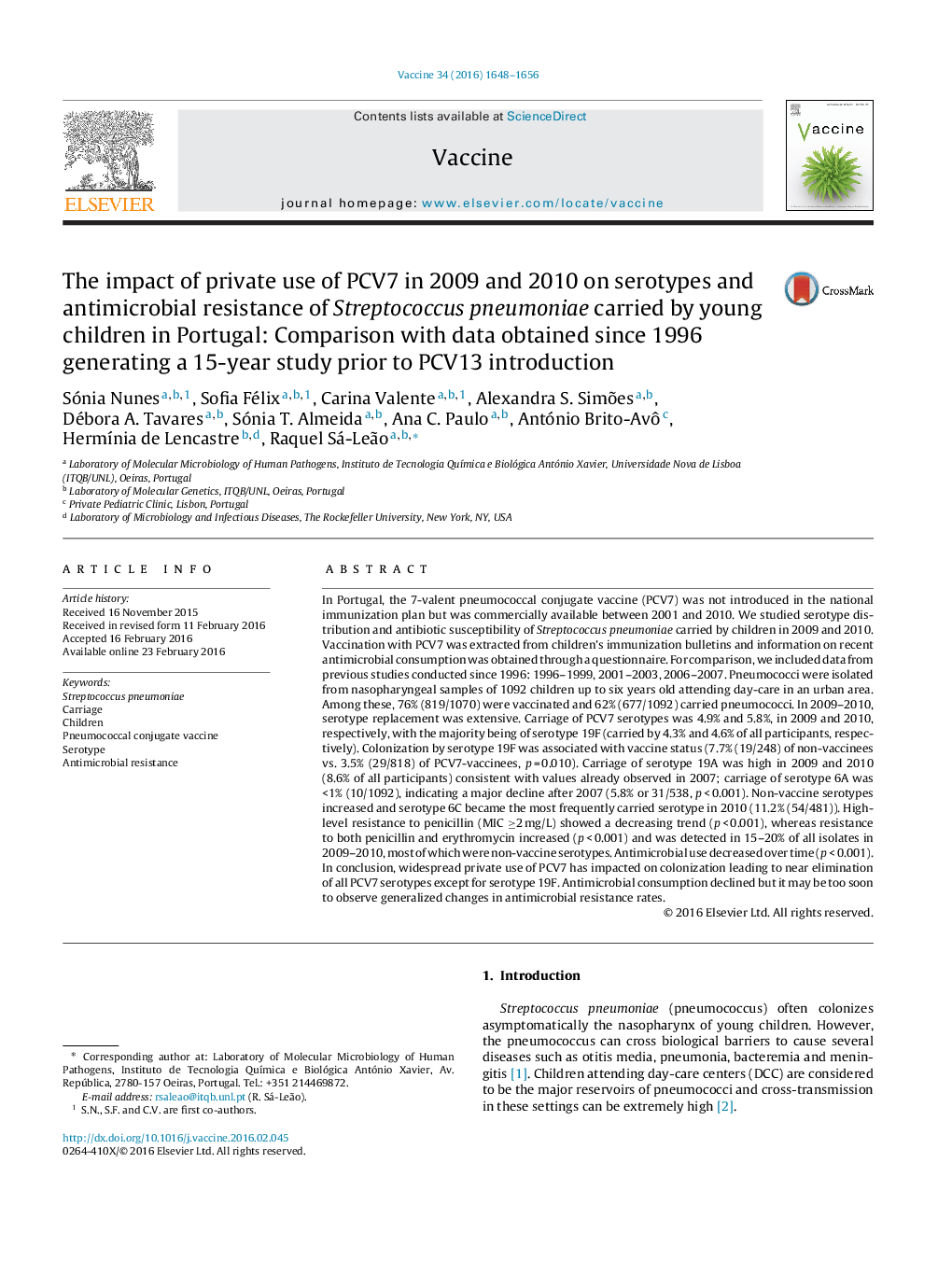| کد مقاله | کد نشریه | سال انتشار | مقاله انگلیسی | نسخه تمام متن |
|---|---|---|---|---|
| 2402168 | 1102661 | 2016 | 9 صفحه PDF | دانلود رایگان |
In Portugal, the 7-valent pneumococcal conjugate vaccine (PCV7) was not introduced in the national immunization plan but was commercially available between 2001 and 2010. We studied serotype distribution and antibiotic susceptibility of Streptococcus pneumoniae carried by children in 2009 and 2010. Vaccination with PCV7 was extracted from children's immunization bulletins and information on recent antimicrobial consumption was obtained through a questionnaire. For comparison, we included data from previous studies conducted since 1996: 1996–1999, 2001–2003, 2006–2007. Pneumococci were isolated from nasopharyngeal samples of 1092 children up to six years old attending day-care in an urban area. Among these, 76% (819/1070) were vaccinated and 62% (677/1092) carried pneumococci. In 2009–2010, serotype replacement was extensive. Carriage of PCV7 serotypes was 4.9% and 5.8%, in 2009 and 2010, respectively, with the majority being of serotype 19F (carried by 4.3% and 4.6% of all participants, respectively). Colonization by serotype 19F was associated with vaccine status (7.7% (19/248) of non-vaccinees vs. 3.5% (29/818) of PCV7-vaccinees, p = 0.010). Carriage of serotype 19A was high in 2009 and 2010 (8.6% of all participants) consistent with values already observed in 2007; carriage of serotype 6A was <1% (10/1092), indicating a major decline after 2007 (5.8% or 31/538, p < 0.001). Non-vaccine serotypes increased and serotype 6C became the most frequently carried serotype in 2010 (11.2% (54/481)). High-level resistance to penicillin (MIC ≥2 mg/L) showed a decreasing trend (p < 0.001), whereas resistance to both penicillin and erythromycin increased (p < 0.001) and was detected in 15–20% of all isolates in 2009–2010, most of which were non-vaccine serotypes. Antimicrobial use decreased over time (p < 0.001). In conclusion, widespread private use of PCV7 has impacted on colonization leading to near elimination of all PCV7 serotypes except for serotype 19F. Antimicrobial consumption declined but it may be too soon to observe generalized changes in antimicrobial resistance rates.
Journal: Vaccine - Volume 34, Issue 14, 29 March 2016, Pages 1648–1656
